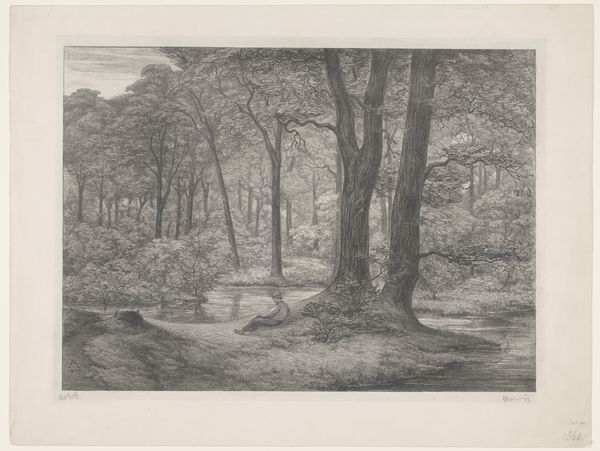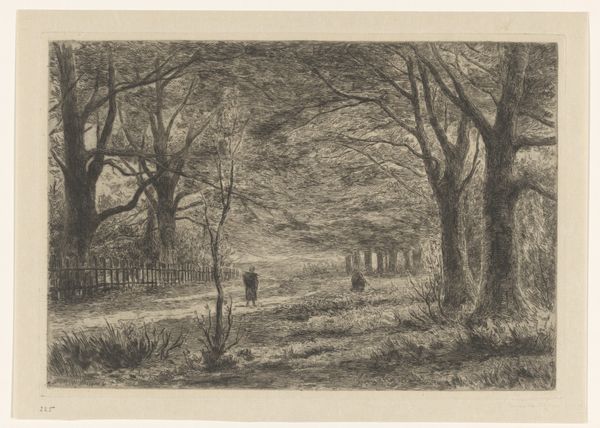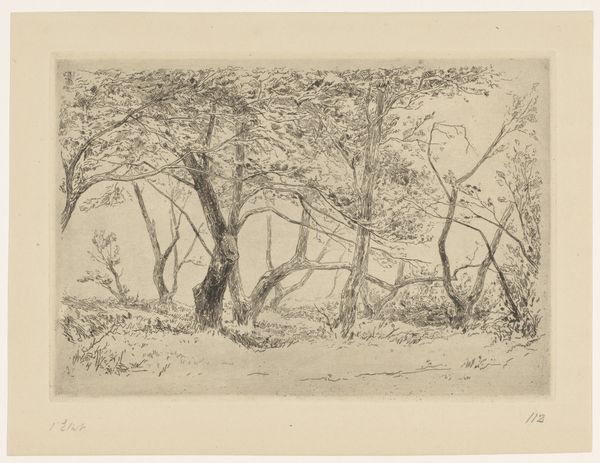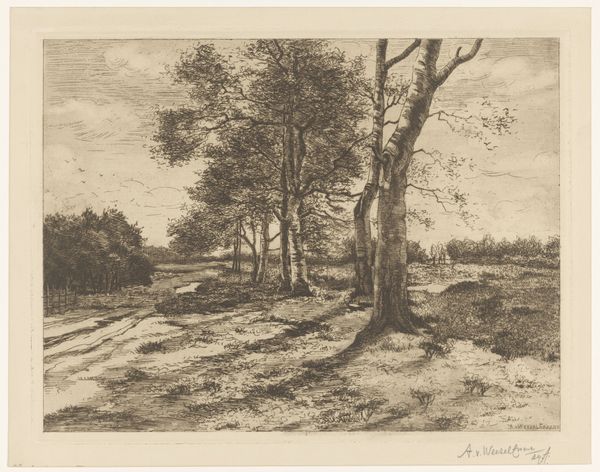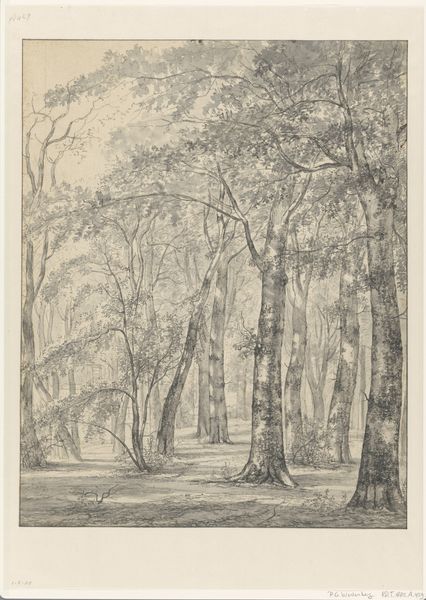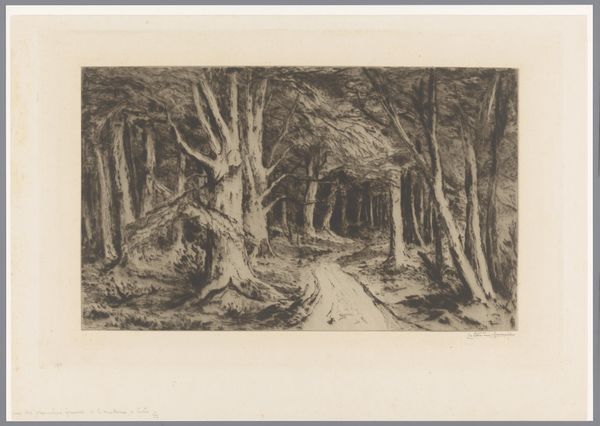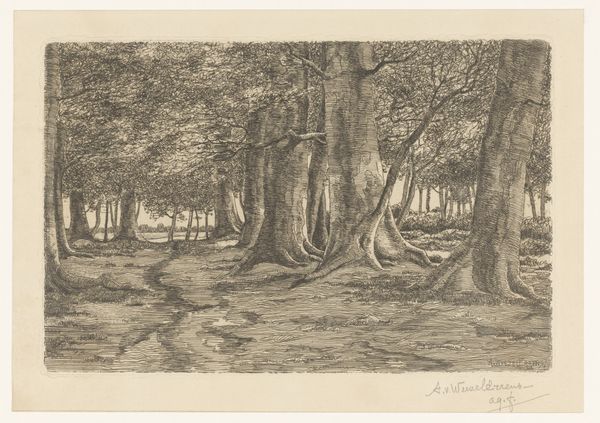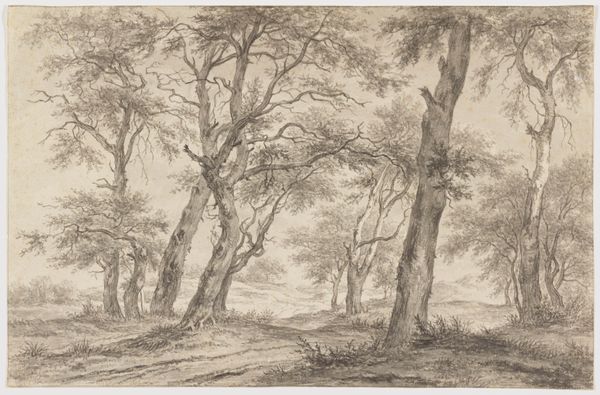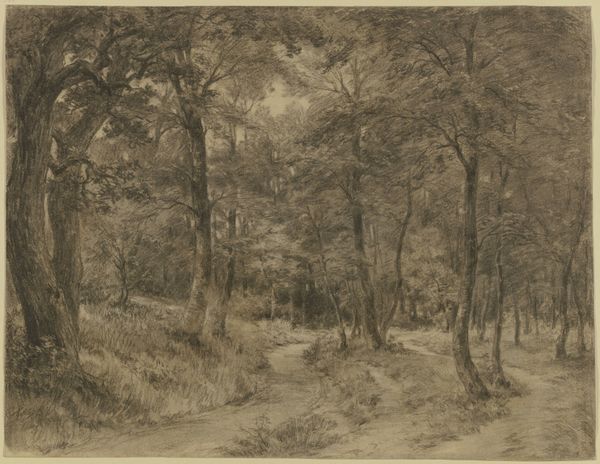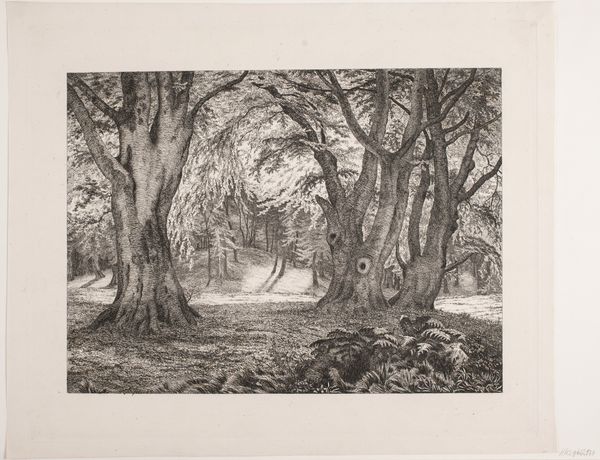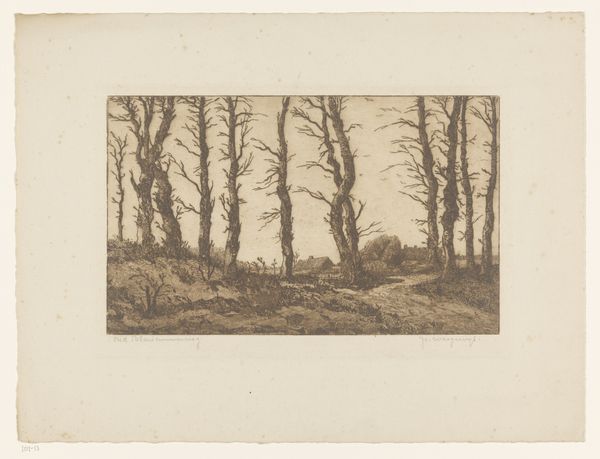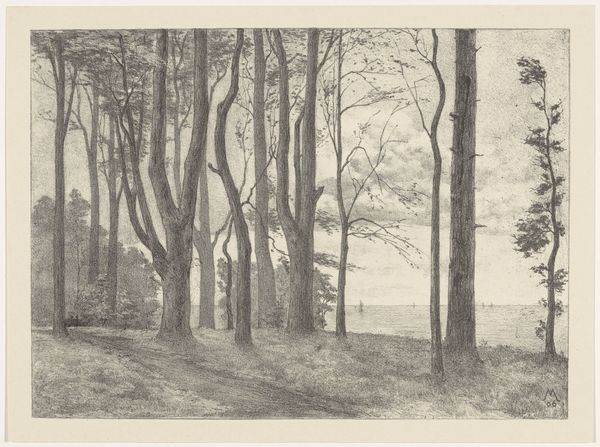
drawing, print, etching, engraving
#
drawing
# print
#
etching
#
pencil sketch
#
landscape
#
pencil drawing
#
engraving
#
realism
Dimensions: height 247 mm, width 323 mm
Copyright: Rijks Museum: Open Domain
Curator: Let's turn our attention to Adolphe P.H.J. van Weezel Errens' "Bomen met schapen en herder," which translates to "Trees with Sheep and Shepherd," likely created sometime between 1876 and 1911. It is on display here at the Rijksmuseum and rendered in etching and engraving. What's your initial read on this landscape? Editor: My immediate impression is of quietude, a peaceful pastoral scene evoked through meticulous rendering. The dense, towering trees frame the modest gathering of sheep, their fleece implied with impressive texture in the absence of color. It's visually dense, yet calm. Curator: Indeed. The composition employs a subtle but deliberate rhythm. Notice how the verticality of the trees is counterbalanced by the horizontal expanse of the landscape. This interplay of lines directs our gaze deeper into the scene, subtly reinforcing a sense of receding space. Editor: It also highlights the labor involved. Engraving and etching aren't exactly known for spontaneous marks; they’re demanding techniques. The artist is mediating this idyllic scene through craft. And beyond this piece's intrinsic composition, the tools, labor, and consumption all have their own presence, no? Curator: The texture achieved through the etching is indeed remarkable. The cross-hatching defines volume and imbues the trees with a sense of almost palpable physicality. Semiotically, the trees function as both boundary and gateway. Editor: And what gateway are we walking through? What kind of social framework enables this artmaking to happen? If it depicts some idyllic moment, what kind of hands created the actual imagery, in a certain socio-economic environment. How does the availability of copper plates or acids translate to what is finally represented. Curator: A fair challenge! Consider then that in addition to compositional form, its realism is remarkable in evoking the play of light filtering through the foliage. It is not mere mimesis; it is, to a great extent, visual poetry achieved through the deployment of very refined artistic devices. Editor: Still, beyond visual and conceptual, I remain compelled to view it in the context of production, in terms of labor and material engagement, or the industrial presence involved in this fine rural image. Curator: So, perhaps we meet in the middle acknowledging both the intrinsic merits of composition and technique, along with awareness of context, tools, and how they coalesce in this thought-provoking scene. Editor: Agreed. Seeing it both as a fabricated art object with deliberate materials in a concrete setting gives rise to unique layers for consideration, a view beyond the immediate pleasure it brings.
Comments
No comments
Be the first to comment and join the conversation on the ultimate creative platform.
